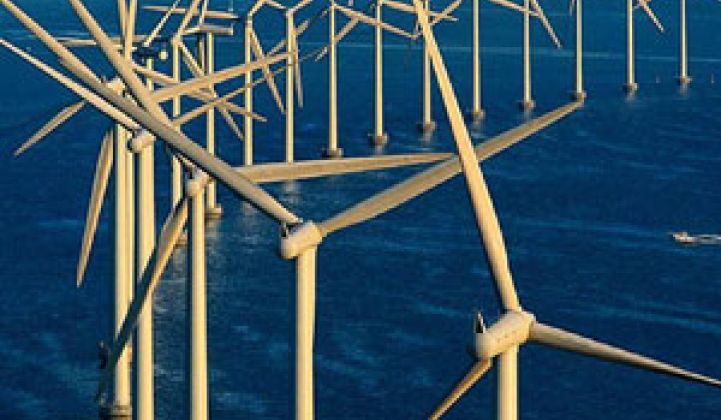The U.S. Department of the Interior and the Federal Energy Regulatory Commission said Tuesday they plan to sign a memorandum of understanding to work on rules for developing renewable energy projects offshore.
The heads of the two agencies have agreed, in broad terms, that the FERC would have the authority to license ocean wave and tidal energy projects while the interior department would issue the final permits for solar and wind projects in areas beyond the state waters.
The agencies expect to complete a draft of the MOU by the end of this week, said Frank Quinby, an interior department spokesman. The document will spell out each agency's authority on regulating different types of renewable energy projects, Quinby said. Both agencies have a say in many of those projects, but who gets more say in the approval process is what needs to be worked out.
For example, the Mineral Management Service, part of the interior department, already has authority to grant leases and collect rent from offshore oil and gas developers. Quinby said MOU will settle whether it can do so for all kinds of offshore renewable energy projects.
Interior Secretary Ken Salazar appeared before the Senate Committee on Energy and Natural Resources on Tuesday morning to talk about what his agency has done to boost renewable energy developments, and he highlighted the agreement with FERC as a key step in achieving that goal.
"We didn't want to trip over each other on ocean and tidal energy projects," Salazar said. "We will be able to move forward with rules that apply to wind projects."
Salazar said his staff will spend the next few month holding public hearings around the country and drafting rules for approving offshore projects.
The MOU would be critical for minimizing battles for authorities among federal agencies as they carry out mandates from President Obama and Congress to boost renewable energy developments.
Political tussles already are growing between states and FERC over electric transmission projects, for example. Some renewable energy groups are lobbying for expanding the FERC's authority to decide where interstate transmission lines should be located, while states are fighting hard to retain their power in making that decision (see Solar and Wind Groups Lobby FERC to Lead Grid Expansion and Draft Legislation a Boon for Solar, Smart Grid).
Asked by the committee chairman Sen. Jeff Bingaman on whether there could be a conflict between interior department and FERC over onshore transmission projects that go through federal land, Salazar said his department "should have a robust role in it" and "provide tremendous input on where to site those transmission lines."
The department's Bureau of Land Management has been working on determining the best locations on BLM land for transmission projects in 11 western states. Salazar said the BLM is looking at land for 5,000 miles of transmission lines while the U.S. Forest Service, also part of the interior department, is determining where 1,000 miles of transmission corridors should go.
He added that his department recently formed a task force to determine "renewable energy zones," areas of federal land that would be idea for solar, wind and geothermal energy projects. Figuring out these energy zones would help to determine where new transmission lines should go.
"We need to get aggressive on building the electron superhighway," Salazar said. "If we are not able to move forward with availability of transmission, we can study the potential of solar and wind and geothermal until the cows come home and it's not going to get done."
The department oversees one-fifth of the United States' landmass and 1.7 billion acres offshore. The BLM already has identify 21 million acres of public land in 11 western states that would be a good fit for wind energy projects, 29 million acres in six southwestern states for solar energy developments, and 140 million acres in western states and Alaska for geothermal energy exploration.
The National Renewable Energy Laboratory, run by the U.S. Department of Energy, also has determined that more than 1,000 gigawatts of wind energy could be produced off the Atlantic coast and more than 900 gigawatts off the Pacific coast.
Before the federal government starts approving offshore renewable energy projects in earnest, it should first collect good geology and other data, Salazar said. The U.S. Geological Survey and the Mineral Management Service are working on collecting those data.
"There are some places where we have tremendous information, such as in the Gulf of Mexico. But information about the Atlantic is old and incomplete – nobody knows what's out there. So it makes a political theater for everybody involved," Salazar told the senators.



